#wuling mountains
Explore tagged Tumblr posts
Text

‘The Flower of Tujia’ Weaves History and Culture Through 150,000 Meters of Red Brocade Thread
Designed by Yi Chen and Muchen Zhang of Beijing-based design studio YI+MU, the artwork spans more than 1,000 square meters along a grid of 20 beams, allowing the fiber to alternately reveal and conceal the geometry of stairwells and windows as one moves around. “The diamond-shape structure inspired by the iconic pattern of the Tujia brocade is clearly visible from all angles,” the studio says. Symbolically interpreting the 30-step process of Xilan Kapu into a three-dimensional piece, the design unifies and highlights the museum’s interior and sparks a sense of wonder that verges on the spiritual, a key aspect of YI+MU’s philosophy.
Intricate geometric patterns and rich hues distinguish the woven textiles of China’s Tujia people, who call the Wuling Mountains home in western Hunan.
All images © YI+MU



#yi chen#muchen zhang#yi+mu#artists#art#artwork#the flower of tujia#culture#red brocade thread#tujia brocade#xilan kapu#wuling mountains#hunan#china
1 note
·
View note
Text
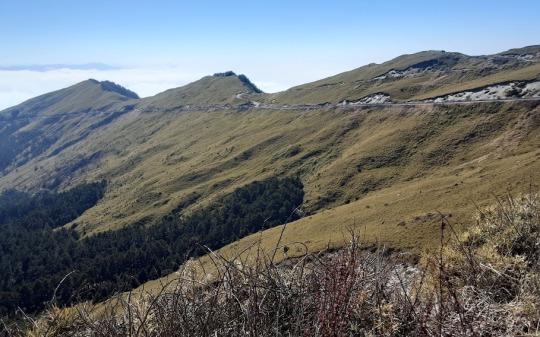
Photo : 站在武嶺往西南可眺台14甲線橫亙合歡山腹 by Chu Lan
Wuling 武嶺,舊名/日語:佐久間峠 Sakuma tōge or 南嶺,為台灣中央山脈北段高峰合歡東峰、合歡主峰間嶺線的鞍部,海拔3,275公尺,是台灣公路最高點,位於台14甲線31.5公里處,在太魯閣國家公園西境,為合歡山森林遊樂區一處景點,行政區劃屬南投縣仁愛鄉大同村。
在武嶺建有一座觀景台,供遊客眺望遠近風景。由於地處偏僻,少有光害,也是夜間觀星的良好地點。
formerly known as Sakuma Pass (佐久間峠, Sakuma-tōge), It's a mountain pass located in Ren'ai, Nantou, Taiwan, transversing the Central Mountain Range near the peak of Hehuanshan within Taroko National Park. It is the highest paved road in elevation in Taiwan.
Many races are held to ride to Wuling, most notably the Taiwan KOM Challenge, a non-UCI sanctioned race beginning in Qixingtan Beach and takes the eastern route. The 107 km race is regarded as an intense climb within the cycling community, with Grand Tour winner Vincenzo Nibali commenting: "I've never ridden such a long and hard climb before in my entire life." Wuling is also a popular stargazing and bird-watching location. Common birds include the Taiwan rosefinch, white-whiskered laughingthrush, and collared bush robin.
and
2023 Taiwan KOM Challenge Race Teaser video 臺灣自行車登山王挑戰
youtube
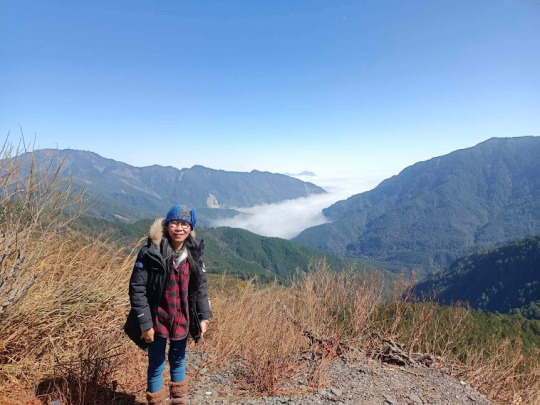
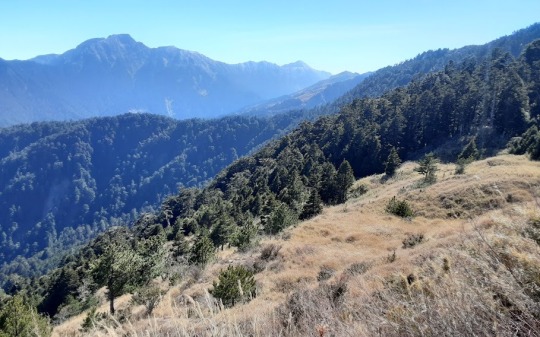

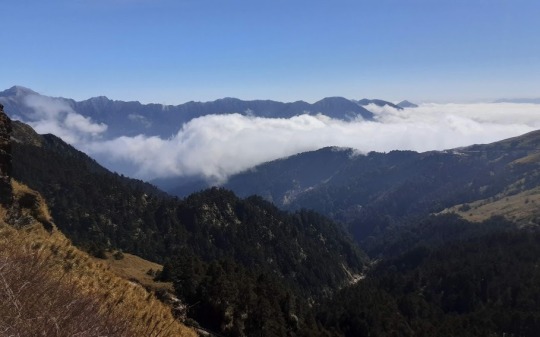

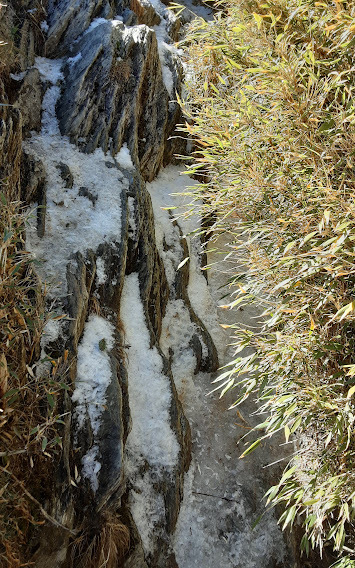
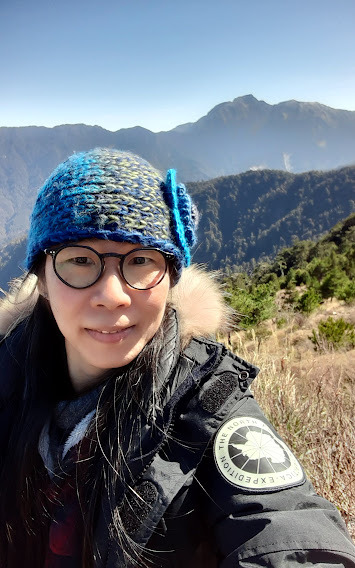
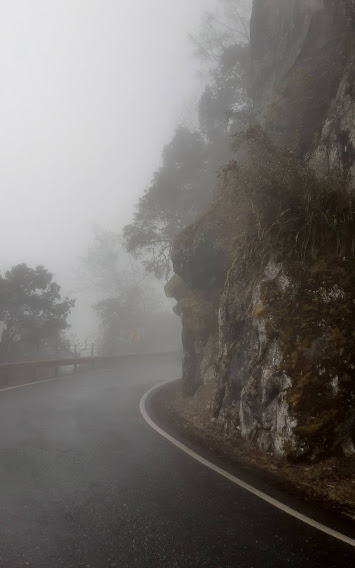

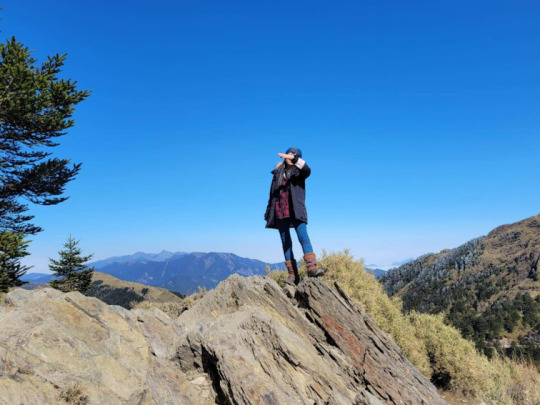


當我沒有��的地,當我並沒有要抵達任何特定的地方,而只為了與山同行而出發時,山就完全地展現了他自己,就像一個人拜訪一位朋友,除了與他在一起之外,沒有其他任何意圖。
The mountain gives itself most completely when I have no destination, when I reach nowhere in particular, but have gone out merely to be with the mountain as one visits a friend with no intention but to be with him.
— Nan Shepherd, The Living Mountain. 💕
#chu lan#朱蘭皮藝#fine craft artist#leather art artist#beautiful life#wuling 武嶺#taiwan 台灣#nan shepherd#the living mountain#travel in 2023#my memories
17 notes
·
View notes
Text



Mount Fanjingshan
Mount Fanjing, or "Fanjingshan," is part of the Wuling mountain range in southwestern China’s Guizhou province.
Named as a UNESCO World Heritage Site, the mountain is home to a conservation area, a nature reserve, and a number of Buddhist temples—it has been considered a sacred site for centuries.
Perched at the top of the most significant “Red Clouds Golden Peak” is the more incredible Fanjingshan Temple with 2,336 meters above the sea.
Photos by @ youknowcyc
#art#design#stairwell#stairway#architecture#staircase#stairs#staircases#hiking#mount fanjingshan#china#mount fanjing#UNESCO#temple#buddhist#red clouds golden peak#peak
502 notes
·
View notes
Text
Many other people have already posted their thoughts on the various peaks of Cang Qiong Mountain sect, so I figure I might as well throw my own thoughts and preferred headcanons out there.
First, my thoughts on the peaks we know exist but don't know much about in terms of their specialties:
Xian Shu Peak: Textiles Peak
This is my favorite headcanon for the all women's peak! The textiles industry is a big part of Chinese history, and was traditionally considered to be women's work, so it would only make sense for it to be Xian Shu Peak's peak specialty. It's not just one specific skill either, as spinning, weaving, dying, garment making, embroidery, rope/cord-making, etc. are all a part of the industry.
As they are a cultivation peak, I expect some of the products of their work to be defensive robes with talismans or incantations stitched into the fabric, Qiankun bags or sleeves, spirit trapping pouches, etc. If rope making is included in their preview, they could also be involved in making immortal binding cables, nets, and so forth.
Ku Xing Peak: Rites, Rituals and Purification Peak
We don't know much about Ku Xing Peak except that they live an aesthetic lifestyle. As it's common for individuals to take on certain aspects of aestheticism (simple clothes, restricted diets, abstinence, etc.) before engaging in many types of rituals, I'm inclined to believe a peak that practices aestheticism at all times would be particularly well suited for such tasks.
I tend to imagine their peak being similar to the Gusu Lan Clan, minus the music aspect (music being Qing Jing's purview). They could specialize in things like summoning spirits, communing with the dead, dispelling resentment, exorcisms, purifying objects or locations, properly laying the dead to rest, etc.
Since SVSSS predominantly focuses on demons, not ghosts, it's only natural a peak that deals more in spiritual cleansing and laying the dead to rest wouldn't be involved in the plot much.
Zui Xian Peak: Potions and Elixers Peak
While lot of fanfics make jokes about Zui Xian being a peak for alcoholics (which is completely fair, as this is the dick joke filled world of SVSSS we're talking about), my first thought upon learning of Zui Xian Peak's specialty was the immorality granting heavenly wine in the Journey to the West. Looking into the matter more, I've since learned that wine has actually been a huge part of Chinese medicine since the Han Dynasty. The traditional character for medicine even includes the radical for wine!
With this kind of precedent, it seems only logical that Zui Xian Peak doesn't merely make alcohol for social and/or enjoyment purposes, it's quite likely to be the ‘external alchemy’ peak of Cang Qiong Mountain. I expect they grow and process at least some of their own herbs and ingredients, along with performing other alcohol and potion making tasks like brewing, distilling, extracting, fermenting, filtering, infusing, and so on.
Next, my thoughts on what the three mystery peaks might be:
I am not going to try and name these peaks, as I struggle with naming things even in my own native tongue.
Hunting, Trapping and Scouting Peak
Having read MDZS before SVSSS, I found the distinct lack of archery in SVSSS to be quite peculiar. As the peak of scholars and strategists, I suppose it's only logical Qing Jing Peak focuses on the four scholarly arts (the guqin, strategy games, calligraphy, and painting), rather then the six arts of Confucian gentlemen (rites, music, archery, equestrianism, calligraphy, and mathematics), but that does leave several ‘arts’ free to be claimed by other peaks! This inspired me to think up a hunting and scouting peak, where disciples excel at archery and equestrianism.
Since mounted archers became a significant aspect of Chinese warfare in the 4th century BC, thanks to King Wuling of Zhao, I'd say having cultivators of this sort in a Xianxia setting is perfectly reasonable. Giving Cang Qiong Mountain sect scouts also nicely fills the gap in their martial capabilities. Without this peak they have strategists, weapon craftsman, ground troops, and suppliers, but no reconnaissance forces!
I also consider this peak to be the rough equivalent of the ‘Beast Taming Peak’ so many works are fond of. Who else could breed and control hundreds of spirit eagles for the Immortal Alliance Conference but a group of cultivators focused on scouting missions? As supernaturally superior mounts and spirit (hunting) dogs would be incredibly helpful to them, they'd likely engage in horse and dog breeding programs as well! Their skill as hunters and trappers would also permit them both to provide game for Cang Qiong Mountain sect, and to aid in the rounding up of various living monsters for both alchemical ingredient harvesting and for releasing at events like the Immortal Alliance Conference.
In summary, this peak would produce disciples skilled at equestrianism, archery, falconry, animal husbandry, scouting, herb gathering, hunting, trapping, etc. For anyone familiar with D&D, I did basically make a Ranger peak here, but I stand by that decision!
Artifacts, Arrays and Invention Peak
Every time I read a work with some variation on the "Mad Scientist Peak" I adore it, so naturally I have to include this type of peak as well. This peak would be for the Wei Wuxians of the cultivation world, hoping to revolutionize cultivation society!
Their focus would be mathematics, spell geometry, arrays, talismans, non-medicinal alchemy (aka ancient materials science), engineering and of course artifact recovery, study and creation. The crystal mirror ‘surveillance equipment’ from the Immortal Alliance Conference? These guys would be the ones that developed it!
Agriculture, Earthworks and Architecture Peak
While I admittedly don't know the nuances of feng shui, I am at least aware there is far more to it then what you usually see in western depictions. In MDZS, it's noted that an area having bad feng shui (like Yi City) can cause premature death, disaster, and an increase in all sorts of nasty supernatural phenomena! With this in mind, a peak that focuses on connecting to and harmonizing with one's environment seems perfect for the final Cang Qiong Mountain peak.
I don't imagine this peak doing much of the actual building in the sect (that's An Ding's job) but when it comes to designing the sect's buildings, or altering its geography through earthworks, they're the ones to talk to. I also see them as producing at least some of the sect’s food supply, using their skills to encourage a positively supernatural abundance of plants.
In short, disciples of this peak would be skilled with things like architecture, earthworks, geography, topography, irrigation, agriculture, element manipulation, etc.
If SVSSS’s heavenly realms have anything akin to TGCF’s elemental masters, there is probably an unusually high chance they come from this peak.
#SVSSS#Scum Villain's Self Saving System#Cang Qiong Mountain Sect#Cang Qiong Mountain#Xian Shu Peak#Ku Xing Peak#Zui Xian Peak#* I just realized I made not only a Ranger peak but both Druid and Artificer ones too.#* My D&D background betrays me!#* Now I feel like I should match up the rest of the peaks with their D&D classes too.#* Qing Jing is the bard and rogue peak for sure!
133 notes
·
View notes
Text
The Man of Wuling (HHS086)
[Their origin as children of the five-coloured dog Panhu, and early history]
In the past, the Gaoxin clan [Emperor Ku] was being robbed by the Quan Rong. The Emperor was troubled by their intrusions and bullying, but his campaigns and attacks had no gains. He therefore searched for and enlisted Under Heaven, that he who was able to obtain the head of the Quan Rong's commander, General Wu, would be rewarded with a thousand yi of yellow gold, an estate of ten thousand families, and also his young daughter as wife. At the time the Emperor had domesticated dog with five-coloured fur named Panhu.
The Wei Sketch says: The Gaoxin clan had an old woman who lived in the royal house. She got a n ear illness. She poked at them, and found a thing as large as a cocoon. The woman put it within a gourd [hu], and covered it with a tray [pan]. Suddenly it changed into a dog, it was patterned in five colours, and because of that they named it Panhu.
After he had sent down the order, Panhu then came below the palace with a person's head in the mouth. The crowd of subjects were astonished, and when they examined it, it was General Wu's head. The Emperor was greatly pleased, but assessed that for Panhu it would not be possible to take his daughter as wife, and also had no way of ennobling him with feudal rank. He discussed his intentions of rewarding him, but know not yet what would be appropriate.
The daughter heard of it and, considering that an order sent down by the Emperor could not stray from the truth, requested to go. The Emperor had no choice, and therefore used the daughter as a match for Panhu. Panhu got the daughter, and carried her away into the southern mountains, they stopped inside a stone cave. The place was perilous and isolated, people searched but did not reach them.
Today west of Luxi county in Chen province, there is a Wu Mountain. Huang Min's Records of Wuling says: The mountain might be ten thousand ren tall. Halfway on the mountain is Panhu's stone cave, it might accommodate several ten thousand people. Within there is a stone bed and vestiges from Panhu actions.
Now note: In front of the mountain cave there is a stone sheep and a stone beast, the ancient vestiges that are strange and unusual are especially many. Looking at the stone cave, it is as large as three unoccupied houses. In the far distance one sees a rock that still resembles a dog in shape. The Man have customarily transmitted that this is a statue of Panhu.
Hence the daughter loosened and took off her robes and skirt, and made knots of pujian僕鑒 and wore clothes of duli獨力. The Emperor pitied and thought of her, and dispatched messengers to look and search for them. Every time they would encounter wind, rain, shaking, and darkness, and the messengers could not manage to advance. In the span of three years, they begot twelve children, six sons and six daughters.
After Panhu died, they made each other husbands and wives. They wove and spun wood and hides, and dyed them with grass and fruits. They were fond of five-coloured clothes, and tailored them to have the shape of a tail.
Gan Bao's Records of Jin says: The barbarians of Wuling, Changsha, and Lujiang commanderies are the descendants of Panhu. They live scattered within the Five Creeks. The Panhu rely on the mountains to obstruct strategic points, and always regularly do harm. They mix and blend fish and meat, knock on a trough and make a sign, and so make sacrifices to Panhu. Those customarily claiming to be “red thighs and horizontals skirts” are precisely his sons and grandsons.
Their mother later returned home, and explained clearly to the Emperor, and so he sent to welcome and bring her various children. Their robes and skirts were mottled and colourful and their speech was that of Zhuli. They were fond of entering mountains and river valleys and were not happy in the flat and open. The Emperor complied with their thoughts, and bestowed on them the famous mountains and wide marshes. Their descendants multiplied and spread out, they were called the Man Yi.
Outwardly they were simpletons, but on the inside they were shrewd. They were unworried in their lands and put weight on old traditions. Due to their ancestral father's merit and their mother being the Emperor's daughter, when farming, making, buying and selling, they had no tallies for passing toll-houses or bridges, or payments of taxes and levies.
He especially favoured them, and for that reason exempted them from taxes and duties. The Records of Jing Province says: In Yuanling county, at the mouth of the You, there are the Shangjiu and Wuyang villages, and indeed these are the descendants of Panhu, the dog race. The two villages are located north of Wuxi.
They have lords and chiefs of their districts. They all are bestowed seals and ribbons, and for caps they use otter skin. They name chieftains as jingfu精夫, and refer to each other as yangtu姎徒. Today they are the Man of Changsha and Wuling.
The Explaining Graphs says: Yang姎is what a woman calls herself, meaning “I”.
During Tang and Yu, they restrained them with hostages, and for that reason it was called the Restrained Domain. In the time of Xia and Shang, they gradually became a border trouble. Arrived at the Zhou period, their group's multitudes spread out and flourished. At King Xuan's [of Zhou, r. 827 – 782 BC] revitalization, he then instructed Fangshu to go on a southern attack against the Man region, which is what the poets speaks of as “the Man and Jing came in awe”. They also say: “Obstinate Man and Jing, the great nation is your foe.” It makes clear their group's multitudes had multiplied many times, and opposed and stood against the various Xia.
The Mao Poetry's Preface to the Lesser Elegantiae says: “The poem 'Collecting Proso millet” is about King Xuan's southern campaign. [The poem says] “We hurry to tell of gathering proso millet, in those new fields. Put it forth indeed that Fangshu, is travelling back dun-dunning. Obstinate Man and Jing, the great nation is your foe. The commentary states: “Fangshu was a noble officer, who was instructed and made commander.”
King Ping [r. 770 – 720 BC] moved east, and the Man thereupon invaded and bullied the upper states. Marquis Wen of Jin [r. 780 – 746 BC] assisted the government, and therefore led Marquis Gong of Cai [r. 761 – 760 BC] to strike and rout them.
Marquis Wen of Jin had animosity.
Arriving at the time of King Wu of Chu [r. 740 – 690 BC], the Man and the Count of Luo together defeated the Chu regiments, and killed their general Qu Xia.
The Zuo Transmittals [13th Year of Duke Huan, 699 BC]: “Qu Xia of Chu invaded Luo and Yan. They became disordered due to the crossing, and form the river they then had no order. Moreover they did not make precautions. Luan and the Lu Rong with their pair of armies went and greatly defeated him. The Mo'ao [a Chu military rank] hanged himself at Huang Valley, and the crowd of commanders were imprisoned at Yefu.
King Zhuang [of Chu, r. 613 - 591 BC] began on the throne, the people starved and the troops were weak, and they then began to rob. When the Chu regiments had been bestirred, they afterwards therefore submitted. From that point they thereupon belong to Chu. During the deeds of Yanling, the Man combined troops with King Gong [r. 590 – 560 BC] to strike Jin.
King Zhuan's personal name was Lü, he was the son of King Mu [r. 625 – 614 BC]
In the Zuo Transmittals, Jin and Chu fought at Yanling [in 575 BC]. Xi Zhi of Jin said: “Chu's two dignitaries loath each other. The King's soldiers use old customs, and at Zheng their deployment was not orderly, and the Man army did not deploy.”
When Wu Qi was chancellor for King Dao [r. 401 – 381 BC], he to the south annexed the Man and Yue, and thereupon they had Dongting and Cangwu. King Zhao of Qin sent Bai Qi to attack Chu [in 278 BC], generally gained control of the Man Yi, and first set up Qianzhong commandery. When Han flourished, they changed it to Wuling. They yearly ordered their great men to convey one bolt of cloth, and lesser mouths a length of two zhang. This was spoken of as cong cloth. Though at times they were robbing and stealing, it was not enough to be a worry for the commanderies and states.
The Explaining Graphs says: Cong is the tax paid by the Southern Man.
3 notes
·
View notes
Text
July 27 - Rice County School, Wuling Green Tunnel, and Aboriginal Museum






Today was a great day because we finally were able to get back out and explore Taiwan. Despite the fact it was raining all day, everyone was still excited. The first place we went to was the rice county school. It really ended up being more like a small museum. We walked around and learned all about the different kinds of rice and process it takes to get from farm to table. Completely unrelated to the school, there was also a cat and an old piano there. The cat obviously stole the show, as it should. I was also excited to see the piano, cause I haven’t played any music since leaving the states. Me and Jack sat and took turns playing some songs while we waited for the rest of the group.
After we departed we had to make one stop before going to lunch, and it was the Wuling green tunnel. It’s a shame it was raining so much, because we weren’t able to stay out for long. Either way, it was still nice to drive down the road and take in the scenery.
After lunch we went off schedule to check out the Prehistoric museum. I was surprised at how different it was from the indigenous people museum despite the two having some overlapping topics. The museum also had a Pacific Islander section, and my personal favorite, a natural history section. Being from Florida we don’t deal with plate tectonics at all. In Taiwan it’s of course a much different story, so I enjoyed reading and learning about the formation of the island and all the ways it is affected today.
Later that night, we swung by 7-eleven to grab dinner again. However, having eaten almost only convenience store food for the past four days I was begging to go a bit insane. So I skipped the food there and walked to find a restaurant with some other people. We ended up stumbling on a nice place nearby. The food and drinks were good, definitely better than anything from 7-eleven, but the best part was the pig they had outside. It was so nice and would oink and wag its tail when we gave it attention. Between all the cats and the pig I saw today, it was a good day to see cute animals.
The topology of Taiwan is something I find very interesting and definitely wasn’t expecting to be able to learn about on this trip. To my surprise, the museum we went to today had an entire subsection dedicated to the formation of the island. I’ve taken a few classes at UF that deal with geology and plate tectonics, so I was familiar with the processes that lead to islands like Taiwan, but I was excited to learn the specifics. Taiwan was formed by a process known as orogenesis, which is when mountains form from plates converging. For Taiwan’s case, it was the Eurasian and Philippine Sea Plates. According to the museum, the eastern coastal range is still moving at a speed of 6-13 cm a year in relation to the central range, which is the reason Taiwan experiences so many earthquakes. According to google, there were two detected earthquakes in the past two days, one in the northeast and another off the coast to the south. Hopefully we don’t get a big one while we’re still here!
2 notes
·
View notes
Text
July 27 - Rice and Prehistoric Museums in Taitung






Today I got up, had breakfast at the hotel, and then hopped on our bus. We saw many mountains and rivers on the bus ride. Our first stop was at a rice museum. There were a bunch of bins of different stages of rice. The first one had rice with the hulls on, then just the hulls, then brown rice, then broken rice, then a few other ones, and it ended with quality white rice. There was also a grocery store there with local Taiwanese farmed food. After the rice museum, we drove to the Wuling Green Tunnel. We got out of the bus to take pictures, and then our bus driver drove us through the tunnel and back. The trees were gorgeous. Then, we stopped at a hot pot restaurant for lunch. This restaurant had a small hot pot for each person. It was delicious. After lunch, we went to a prehistoric museum. This museum had exhibits on the indigenous people that lived in Taiwan before the Chinese and others came. I saw an indigenous person’s skull. However, it also had a section on the natural history of Taiwan. After that, we stopped at a few stores on the way back to the hotel. Some of us walked to a small restaurant near our hotel, and there was a pet pig standing outside on a leash.
Academic Reflection:
At the rice museum, I learned about the different stages of rice production and processing. The hull of the rice has to be removed. Then you can either keep the brown rice or remove that part too to get white rice. Peter told us that Taiwan makes lots of short grain rice, but the younger generation has been eating less rice, causing a surplus of rice. He said that the Taiwanese government has been advocating for people to eat more rice.
At the prehistoric museum, I learned about the advances made in pottery by the indigenous Taiwanese. They went from black ceramics to red. I also learned that they are Austronesian, so they come from the same ancestry as lots of native Pacific Islanders. In the natural history section, I learned about the tectonic plates that surround Taiwan and the fault line that goes down the east side. I also learned about the animals that lived in Taiwan and saw their fossils. Most of the animals are said to have probably come from mainland China’s southeast coast.
4 notes
·
View notes
Text
Fanjing Shan
Peak in China



Fanjingshan Hongyun Golden Summit (New Golden Summit), Stone Steps, Cheng'en Temple fromMount Fanjing


The Mushroom Rock, Jinding


Buddhist temple on Red Clouds Golden Summit, Dharma Hall, Cheng'en Temple
The Fanjingshan or Mount Fanjing, located in Tongren, Guizhou province, is the highest peak of the Wuling Mountains in southeastern China, at an elevation of 2,570 m. The Fanjingshan National Nature Reserve was established in 1978 and designated a UNESCO Biosphere Reserve in 1986.
Elevation: 2,570 m
Province: Guizhou
Coordinates: 27°53′44″N 108°40′48″E / 27.89555556°N 108.68°E
English translation: Mountain of the Pure Land of Brahma
Fanjingshan - Wikipedia

Amidst the incredibly splendid mountainous landscapes of Tongren, Guizhou province, China, Mount Fanjing, one of the world's greatest wonders, stands as an enigmatic masterpiece of nature and human endeavor.
- Neil deGrasse Tyson
371 notes
·
View notes
Text
LPNPM 639
To enter the music show click on the link below :
Blogger - Luis Plantier
Duration of the music show = 1:02 h

Photo - Buddhist temple on Mount Fanjing, the highest peak of the Wuling Mountains, southwest China, can only be reached by a 9.000 steps stairway
1 note
·
View note
Link
Nantou Attractions | Hehuan Mountain Wuling Observation Deck - the highest point of Taiwan Highway #nantou #taiwan #attractions #wuling #hehuanshan #hightest #landscape https://www.jakchang.com/2022/11/wuling-nantou-taiwan.html
0 notes
Text
Tianzi Mountains China- The Scenic Floating mountain that Resembles 'Avatar' Movie
Tianzi mountains China
The Tianzi Mountains are a scenic mountain range located in the Hunan Province of China. The Mountains are known for their unique natural beauty, with towering peaks, deep valleys, and stunning vistas. Visitors can explore the area by hiking along trails that wind through the mountains, or by taking a cable car ride to the top of the peaks. Some of the most popular attractions in the Tianzi Mountains include the "Avatar Hallelujah Mountain," which was named after the famous movie "Avatar" because it resembles the floating mountains from the film. Other popular sites include the "Imperial Brush Peak," which looks like a giant paintbrush, and the "Sea of Clouds," which is a breathtaking phenomenon that occurs when low-lying clouds blanket the valleys below.
The geology of the Tianzi mountains
The Tianzi Mountains are a part of the Wuling Mountains range, which is known for its complex and varied geology. The Wuling Mountains are situated at the intersection of the Yangtze and Pearl River basins and are the result of the collision of several tectonic plates over millions of years. The most notable geographic features of the area are the pillar-like formations that are seen throughout the Tianzi mountains. Although resembling karst terrain, this area is not underlain by limestones and is not the product of chemical dissolution, which is characteristic of limestone karst.
These features are the result of many years of physical, rather than chemical, erosion. Much of the weathering is the result of expanding ice in the winter and the plants that grow on them. The weather is moist year-round, and as a result, the foliage is very dense. The weathered material is carried away primarily by streams. These formations are a distinct hallmark of the Chinese landscape and can be found in many ancient Chinese paintings.
How were the Tianzi mountains formed?- The mountains are quartz sandstone and were formed about 400 million years ago through irregular rising patterns of the earth's crust. This geological formation belongs to the "New Cathaysian" tectonic system. The Tianzi Mountains were covered by a shallow sea. Over time, layers of sediment accumulated on the sea floor, which eventually solidified into sandstone. The sandstone was then exposed to weathering and erosion, including the chemical dissolution of the rock by acidic rainwater.
Also read- The extraordinary holy mountain of China-“Fanjingshan” Take a tour around an island of metamorphic sea karst
Zhangjiajie National Forest Park
Zhangjiajie National Forest Park is a scenic area located in the northern part of Hunan Province, China. The park covers an area of approximately 480 square kilometers and is known for its stunning natural beauty and unique landscape. The park is famous for its towering sandstone pillars and peaks, which are surrounded by lush forests and misty valleys. The pillars, which are a result of natural erosion over millions of years, have been shaped into various shapes and sizes.
Zhangjiajie National Forest Park is also home to several rare and endangered species of flora and fauna. The park is particularly known for its high diversity of primates, including the endangered Golden Monkey and the Sichuan Snub-Nosed Monkey. Visitors to Zhangjiajie National Forest Park can explore the area on foot by hiking along the park's numerous trails, or by taking a cable car ride to the summit of the pillars. Zhangjiajie National Forest Park is a popular tourist destination and has been designated as a UNESCO World Heritage site due to its unique natural beauty and cultural significance. Tianzi mountains map- Tianzi Mountain map shows the location of the mountain range and nearby towns.
Tianzi mountains tour
Tianzi Mountain is a popular tourist destination managed by the national forest service. Spring and fall is the best time to visit and explore especially in April and October. Attractions awaiting visitors in the area include the likes of Shentang Gulf which is as of yet untouched by people and looks like a mythical place. A tour of the Mountains is a great way to experience the natural beauty of this stunning mountain range.
Here are some things you can do during your visit-
Hiking- Hiking is the best way to explore the Tianzi Mountains on foot. There are several hiking trails that wind through the mountains, ranging from easy walks to more challenging treks. The trails offer breathtaking views of the peaks, valleys, and surrounding landscape.
Cable car ride- A cable car ride to the top of the peaks is a more relaxed way to take in the scenery. The cable car offers stunning views of the surrounding mountains and valleys.
Photography- The Tianzi Mountains are a photographer's paradise, with stunning vistas and unique geological features. Whether you're a professional or amateur photographer, you'll find plenty of opportunities to capture beautiful images.
Visit Avatar Hallelujah Mountain- The Avatar Hallelujah Mountain is one of the most popular attractions in the Tianzi Mountains. This peak was named after the floating mountains in the movie Avatar and offers stunning views of the surrounding landscape. The film's director and production designers said that they drew inspiration for the floating rocks from mountains from around the world, including those in Hunan province.
Explore Tianzi Mountain Nature Reserve- The Tianzi Mountain Nature Reserve is a protected area that is home to a variety of plant and animal species. Visitors can explore the reserve on foot and see rare species such as the Chinese giant salamander and the golden pheasant. The Tianzi Mountains are also known for their delicious local cuisine.
Tianzi mountains rock climbing
Tianzi Mountains in China are a popular destination for rock climbing enthusiasts. The towering sandstone pillars that rise from the misty forests offer a unique and challenging climbing experience. The most popular climbing area in Tianzi Mountains is located in the area called Yangjiajie, which has over 200 climbing routes. The routes range in difficulty from beginner to advanced, and climbers can enjoy a variety of styles, including sport climbing and traditional climbing. Wildlife Tianzi mountains- Tianzi Mountains in China are home to a diverse range of wildlife species. Some of the wildlife species that can be found in the Tianzi Mountains include macaques, civets, giant salamanders, Chinese water deer, and wild boar. The forests are also home to many bird species, including the rare Chinese monal pheasant, which is considered a symbol of the area's natural beauty. One of the most popular animals to see in the Tianzi Mountains is the golden snub-nosed monkey. These monkeys are endemic to the region and are known for their striking appearance, with bright orange and white fur and a distinctive upturned nose.
Tianzi mountains monastery
Tianzi Mountains in China is a popular destination for both tourists and religious pilgrims. There are several monasteries and temples located throughout the mountains. One of the most famous monasteries in the Tianzi Mountains is the Tianzi Monastery, which is located at the summit of Tianzi Mountain. The monastery was built during the Ming Dynasty and has a long and fascinating history. Visitors can explore the monastery and admire its beautiful architecture, which features ornate carvings and intricate decorations. Another notable religious site in the Mountains is the Yuanjue Temple, which is located near the base of the mountains. The temple was originally built during the Tang Dynasty and has since been rebuilt and restored several times.
How to get to Tianzi mountains
The Mountains are located in the northern part of the Wulingyuan Scenic Area in Hunan Province, China. The nearest airport to Tianzi Mountains is the Zhangjiajie Hehua Airport, which has regular flights to major cities in China. From the airport, one can take a taxi or shuttle bus to Tianzi Mountains, which is about a 50-minute drive. The closest train station to Tianzi Mountains is the Zhangjiajie Railway Station. Apart from this, there are regular bus services to The Mountains from Zhangjiajie City and other nearby cities.
0 notes
Photo

How stunning Taiwan , like those mystical paintings of mountains shrouded in mist that too scenic and serene to be true. #taiwan #beatuiful #wuling #hehuanshan #台灣美景 https://www.instagram.com/p/CoC5BHUvhTz/?igshid=NGJjMDIxMWI=
0 notes
Photo

Fanjingshan or Fanjing Mountain located in Tongren, Guizhou province, is the highest peak of the Wuling Mountains in southwest China,
4 notes
·
View notes
Photo

By Nk7
Fanjingshan, Tongren, Guizhou Province, China
#curators on tumblr#china#asia#travel#guizhou#fanjingshan#mt fanjing#tongren#wuling mountains#mountain#east asia#landscape#nk7
33 notes
·
View notes
Photo

The Mount Fanjing, located in Tongren, Guizhou province, is the highest peak of the Wuling Mountains in southwestern China
By Mande5255881 – Own work, CC BY-SA 3.0, Link
2 notes
·
View notes
Text
Oof... These new routes are not giving me a lot of good prospects...

Reflection Cave gave me a Roggenrola that I named Fanjing, after the Fanjingshan in the Wuling mountain range. It's a sacred mountain and the home of many Buddhist temples, most notable among them being a joined pair across the twin peaks of the Red Clouds Golden Summit, and the New Golden Summit. The psychic mental/spiritual themes of the Reflection Cave drew me to the intersection of rocks and meditation. Anyway, he's Quirky and Hates to lose, which isn't very zen of him...
He gets to go live in the box now... buhbye👋

Not the first thing I was expecting to find on route 11... I wanted to name her after the town where the first women's sumo stable was established but it turns out that info was trickier to find than I'd hoped.
So, instead I named her Ajigasawa(Lonely and Somewhat vain) after the hometown of Hiyori Kon, probably the most famous female sumo wrestler in the modern day. Shes not just an accomplished athlete but a strong advocate and activist, spearheading moves to legitimize and popularize women's sumo, as well as to get it and sumo in general into the Olympics. She was also the focal point of the netflix documentary, Little Miss Sumo.
She's definitely swapping in for Rozas, since she'd never be able to evolve all the way into a Machamp anyway.
4 notes
·
View notes